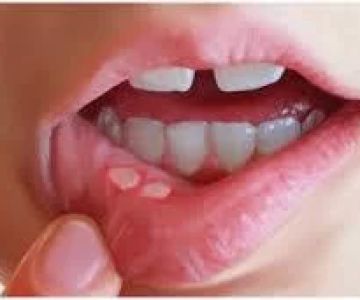Cold Sores: A Detailed Overview
Cold sores, also known as fever blisters, are a common and often bothersome condition that affects many people. These painful fluid-filled sores typically form on the outside of the mouth around the lips. They are caused by an infection with the herpes simplex virus, usually type 1 (HSV-1). It's estimated that nearly 90 percent of U.S. adults have been infected with this virus, although many may not show symptoms. The virus resides in the nerve cells and can reactivate periodically, leading to recurring outbreaks of cold sores.
Causes and Triggers of Cold Sores
The primary cause of cold sores is the herpes simplex virus. Various factors can trigger an outbreak, such as illness, stress, sun exposure, trauma to the mouth area, and hormonal changes like during menstruation or pregnancy. Understanding your specific triggers can help you minimize the occurrence of these painful sores.
Symptoms of Cold Sores
Symptoms of cold sores can vary. Initially, you might experience tingling, itching, pain, or numbness on the lip or nearby skin. Within 24 hours, bumps form and fill with fluid, becoming blister-like. The area becomes red, swollen, and painful. The blisters may break open and ooze a clear or slightly yellow fluid, and eventually a crust forms as the sore begins to heal. Cold sores usually last one to two weeks, but the duration can be longer if you have a weakened immune system.
Diagnosis and Distinction from Canker Sores
Doctors can diagnose cold sores based on the appearance and location of the sores. It's important to distinguish cold sores from canker sores. Cold sores form on the outside of the mouth, while canker sores are painful white or yellow sores that occur inside the mouth and are not contagious. Canker sores have no known specific cause.
Treatment Options for Cold Sores
Treatment for cold sores includes both over-the-counter and prescription medications. Topical anesthetics can numb the pain, while antiviral creams or oral medications can speed up the healing process. If cold sores persist longer than a few weeks, cause a high fever, or result in eye irritation, it's essential to see a doctor.
Prevention of Cold Sore Outbreaks
To prevent cold sore outbreaks, it's crucial to avoid triggers. This includes protecting your lips from sun exposure, managing stress, and maintaining a healthy lifestyle. Avoid sharing items that come into contact with the mouth and be cautious when in close contact with others to prevent the spread of the virus.
Conclusion
In conclusion, cold sores on the mouth are a common viral infection caused by the herpes simplex virus. They can be triggered by various factors and have distinct symptoms and stages. While there is no cure for the virus, proper treatment and prevention strategies can help manage and reduce the frequency and severity of outbreaks. If you have concerns about cold sores or their treatment, it's advisable to consult a healthcare provider for personalized advice and appropriate management. Remember, being informed and taking proactive steps can go a long way in dealing with this common oral health issue.




 Dr. Joshua A. Bresler, DMD3.0 (5 review)
Dr. Joshua A. Bresler, DMD3.0 (5 review) CE Solano D.M.D. Oral & Maxillofacial Surgery3.0 (303 review)
CE Solano D.M.D. Oral & Maxillofacial Surgery3.0 (303 review) Bella Smiles: Diana Pop, DDS0.0 (0 review)
Bella Smiles: Diana Pop, DDS0.0 (0 review) Dental Solutions of Roxborough4.0 (219 review)
Dental Solutions of Roxborough4.0 (219 review) Bright Now! Dental & Orthodontics4.0 (416 review)
Bright Now! Dental & Orthodontics4.0 (416 review) Nordberg Family Dentistry4.0 (22 review)
Nordberg Family Dentistry4.0 (22 review) The Importance of Oral Health Education During Pregnancy for a Healthy Pregnancy
The Importance of Oral Health Education During Pregnancy for a Healthy Pregnancy Best Tips for Brushing Your Teeth Properly for Healthy Gums: Essential Techniques for Oral Health
Best Tips for Brushing Your Teeth Properly for Healthy Gums: Essential Techniques for Oral Health Why Skipping Dental Checkups Can Lead to Bigger Oral Health Problems
Why Skipping Dental Checkups Can Lead to Bigger Oral Health Problems Advantages of Porcelain Dental Restorations
Advantages of Porcelain Dental Restorations How Can Diabetes Cause Tooth and Gum Problems? Preventing and Managing Oral Health Issues
How Can Diabetes Cause Tooth and Gum Problems? Preventing and Managing Oral Health Issues Healthy Habits for Promoting Good Oral Health and Hygiene: Tips for a Healthy Smile
Healthy Habits for Promoting Good Oral Health and Hygiene: Tips for a Healthy Smile